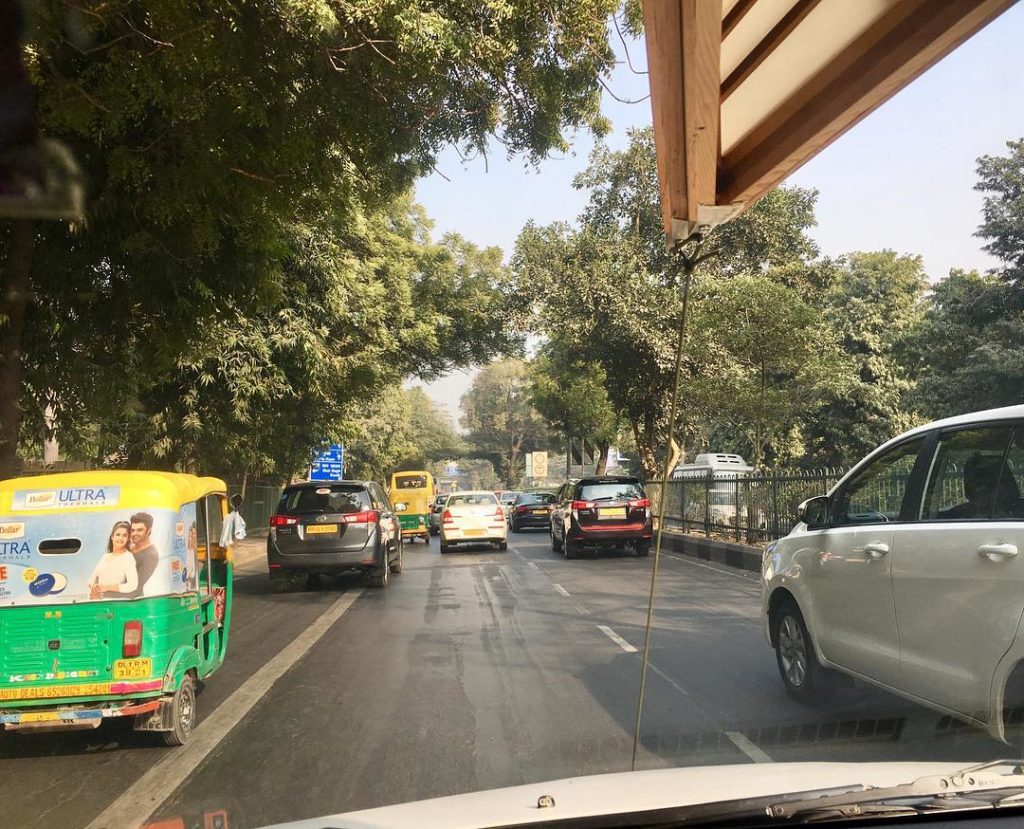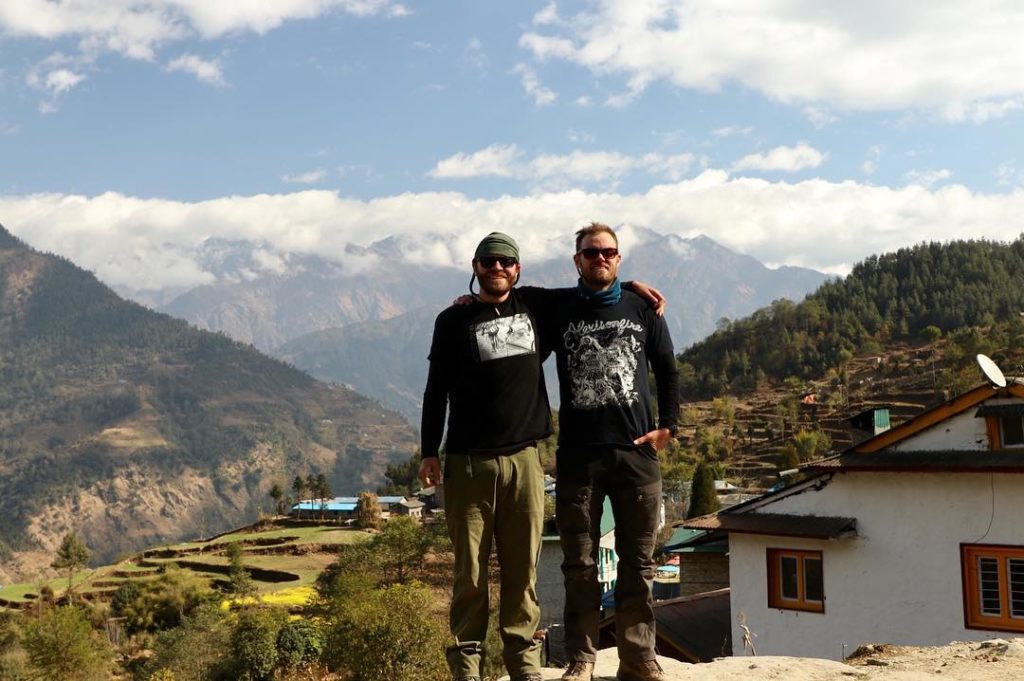The crew woke up on December 28th reluctant to leave the familiar Kathmandu, but excited to move on with the trip. They were somewhat nervous to make the drive to Salleri. Kyle and Tom had done it before, but they were less than comfortable for the 14.5 hours down winding, ragged roads. They previously had to take detours and drop others off at odd places, all while bouncing along with every pothole, just wishing for the drive to end and Salleri to begin. But this time, the team—now Kyle, Tom, Seton, Dane, and the two canoes—hired their own Jeep for the trip. It was a much smoother ride now, with a better vehicle and better company.

When they pulled into Salleri, they checked the time and could barely believe that they were at their destination already. It had only taken nine hours to get there, instead of the previous 14.5. At the guest house, Tom went straight to bed; he’d gotten sick the night before with stomach issues and a fever. This made the 29th a rest day for the crew.
Expeditions such as this one warrant lots of care: prepping and stretching in the morning, taking breaks throughout the day, checking in with and supporting the team. Carrying the weight of a canoe every day, and the general challenges of approaching such a big hike, parallel the mental health issues that Kyle and Tom are trying to illuminate. Being attentive and observant to the people around you is important to being part of an expedition team, and it’s just as important in daily life. To approach friends when they’re struggling and ask what you can do to help. To stay up in the night with them when they’re feeling low, and approach solutions together. To take rest days when necessary. To walk alongside a struggling friend in silent support, because sometimes that’s enough.
Spending more time in Salleri meant spending more time around locals, and as the canoes got unloaded and prepared for the trek, they continued to grab attention from bystanders. In the outskirts of Himalaya, deep into Nepal, many locals—especially children—had never seen a boat, let alone a canoe before. As the crew drove or walked by, people on the street halted their work to stop and stare. The canoes were greeted sometimes with confusion, sometimes with excitement and joy, but mostly a mix of the two. The team quickly learned the Nepali word for boat: dunga.
Tom felt better on the morning of the 30th and after some final touches on the canoes, the portage began. Kyle and Tom were each carrying about 90 lbs, and the rest of the team had about 60 lbs on their backs.
It started strong, their original goal was to reach Chiwang by the end of the day but they ended up hitting it after less than two hours of hiking. Pushing all the way to Ringmu, their second day’s goal, would have been too far so they kept going to a smaller town called Phera. The town consists of a guest house and not much else, so that was where they stayed. Tom remembered it from a previous trip and was enamoured by its charm and atmosphere, as well as the associated nostalgia of having been before. They had a well-deserved cozy night, that day they’d hiked 8.5 km total with 950 m of ascent.

On the 31st, the team trekked to Ringmu as planned. They were starting to get into the rhythm of the hiking life and had a fairly easy day. Ringmu was the perfect place to spend New Year’s Eve. A beautiful countryside town, Kyle and Tom had visited before and were comfortable with the space. They were excited to share it with the others. Dane led a yoga session overlooking the mountains as the sun set, anticipating its rise again on the dawn of a new year.
New Year’s Day posed more challenges. The crew anticipated their biggest ascent yet: 350 m up, all at once, right at the beginning of the day. But they planned ahead, timing their breaks to avoid injury as much as possible, and even made it up the first 223 m without stopping.
The descent was more difficult. It was 900 m down into Nunthala, where they would be spending the night. The team knew that descent was riskier than ascent. Their heart rates wouldn’t be as high and they wouldn’t be sweating as much, but the pounding of the canoes while going downhill was a risk factor to watch out for. They continued to be cautious and even then, Kyle was having issues with his shoulders. It was hard not to foster paranoia about injury, especially as he’d hurt his knee on the very same descent before. But he adjusted his pack and his canoe, and was thankfully unharmed.
The team made it through the descent unscathed and reached Nunthala after about 5.5 hours of hiking. They stayed at a warm and accommodating tea house, had a satisfying dinner, and went to bed. They’d been sleeping much longer each night than they did at home, either from the mountain air or the exhaustion from the active days. No matter what reason, they needed the energy.
On the morning of January 2nd, the team set off to hike to Kharikhola at around 11:30 am. They knew this would be another difficult day, hiking about 700 m down and 569 m up into the town. The system of taking periodic 10-minute breaks and check-ins continued to work well on the descent. They also had to make sure they weren’t too tired for the following ascent, which would be the hardest one they’d have to conquer so far. The sound of their heavy breaths echoed through the bow of the canoes. They made it up the steep ascent with aching shoulders and burning calves, wet with sweat. Seton described this part of the hike as the hardest physical day of his life, and the rest of the team couldn’t argue.

They arrived in Kharikhola at around 4:40 pm, exhausted but with lots of time to relax in the evening. Lots of time for food too. Burning thousands of calories a day is only sustainable if it’s matched with fuel. Four giant plates of pasta showed up at their dinner table, and the team stuffed themselves with carbs. Although satisfying, the meal set Dane and Seton back because their keto diet at home didn’t support copious amounts of pasta. The two started feeling sick and didn’t sleep well.
In the morning, Dane and Seton lacked energy so the crew decided to change their plans and go from Kharikhola to Bupsa instead of further on. Throughout the trek, it was becoming increasingly important to listen to team members and take care of each other. They took the afternoon to rest and recover for the days to come. This was another moment that paralleled the ebb and flow of mental health and showed that even after repercussions, taking it slow could pay off.
Feeling slightly better on the 4th, the team hiked into Paiya. With more and more ascent each day, the terrain was starting to become snowy and icy in the mountain air. It was at least 550 m up out of Bupsa and then even more up the trail to Paiya. They finished the day at around 5 pm. It was a difficult one, but their bodies were acquainted to the activity, and Dane and Seton were glad to feel better and have their appetites back.
The team got up early on the 5th to leave by 8:30 am, knowing it would be their biggest day yet. The goal was Lukla, a key milestone of the trip. It marked both a familiar place, and a point in the trek where the ascents would get less frequent and dramatic. They conquered 636 m of descent and then about 750 m of ascent. Tom’s knee started acting up during the descent portion. But he approached with caution, took breaks, tried different ways of bandaging and stretching it. The ascent was faster and less painful. Having left early in the morning meant that the team got into town at about 4:30 pm, not too late to rest and relax after the long day.
That night in Lukla they found a restaurant called the Scottish Pub. It was an odd find, nestled in a mountain town, but a good find nonetheless. So far in the trip, the crew had been cautiously eating vegetarian, but tonight they craved meat. They ordered fries, beers, and six burgers complete with buffalo meat and nak cheese (which comes from a female yak). There was lots to celebrate: reaching Lukla, finishing the first week of the trip, and reuniting with Maggie and Fiona to assemble the full crew. The fusion of Nepalese life and Western food was fitting for the success of the day, and they went to bed full and content.
However, Kyle woke up in the middle of the night feeling sick. Feverish, shaking, and concerned that he’d have to go to the hospital, he woke up Tom. They were unsure if it was food poisoning or a rogue virus. They were lucky to have family and friends in medical professions back home; they facetimed their mom (a nurse practitioner) as well as Sally, a friend and med school student, for advice. After giving Kyle some medication they went back to sleep. That morning, on the 6th, they took a rest day in hopes that Kyle would feel better.
After this rest day, the team would have no more scheduled rest days for the duration of the trip. But Tom says that if they need to take one, then they will. Sometimes things don’t go as planned. Above the pride of a journey and the satisfaction of all the little victories on the trail, staying attentive and healthy is most important. The goodness of the trip isn’t defined by physical achievements, but the experience and the cause.

Written by Anabelle Zaluski

